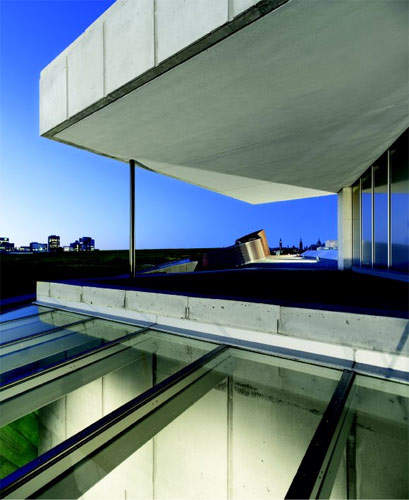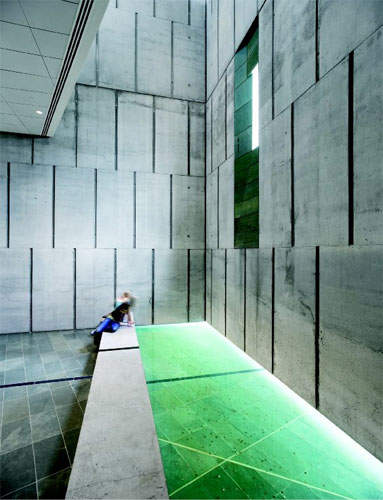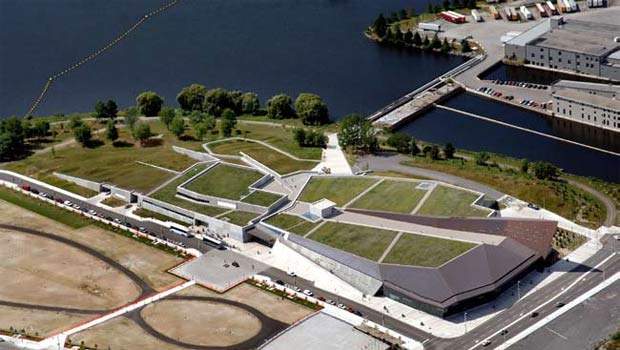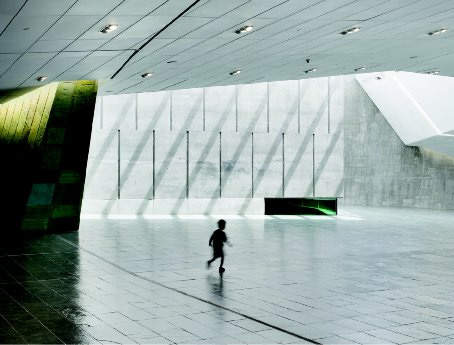The Canadian War Museum is located in downtown Ottawa, overlooking the pastoral banks of the Ottawa River and rising slowly towards the east to engage the urban cityscape. The building is horizontal, with a rooftop of wild grass. To the south is a large new urban park called The Commons which is used for concerts and other large events throughout the year.
The museum is organised around two points in order to make connections beyond the bounds of its immediate site. The first is the view towards the Peace Tower which soars three hundred feet high on Ottawa’s Parliament Hill to the east.
The second is
the position of the sun on Remembrance Day, November 11 at 11am, when all Canadians observe a moment of silence in remembrance of their fallen soldiers.
MATERIALS
The materials for the museum were kept sparse and simple: mainly concrete, steel and copper. To reflect the devastation wrought by war, the idea of controlled imperfection was employed to bring out the more expressive qualities of these materials.
Concrete was allowed to ooze through deliberately spaced gaps, rough edges and missing knot holes in the formwork. Steel bolt connections and exposed fasteners are celebrated; weld joints and burn marks left unfinished. Discarded copper panels taken from
the roof of Canada’s Library of Parliament were recycled, hammered flat and reinstalled in their raw form as the finish for many interior walls.
ACCESSIBILITY
The public can travel right over the top of the Museum from the Riverside to the Commons along a wheelchair accessible pathway called ‘La Traverse’. From the roof, they will enjoy a moment where the Museum’s architecture frames a view of the Peace
Tower and Canada’s Parliament buildings in the distance.
The main lobby is another option for travelling through the museum, connecting rooms through various pathways. Within this is the Hall of Remembrance, which honours the memories of veterans and the lives sacrificed for Canada. The space is a 9 by 9m
cube: austere, calm and meditative. The concrete walls of the space display an alternating joint pattern reminiscent of rows of white grave markers in Allied war cemeteries.
The intent was to preserve as much of the museum as possible as free public space, and to use the building as a means of traversing the pastoral site. Hence, the museum becomes part of the public park at the edge of the Ottawa River.







